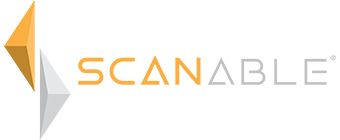 (Norcross, Ga., 03 September 2009) District Attorney Joe Mulholland of the South Georgia Judicial Circuit added yet another legal case reference to the growing number of U.S. court cases in which Leica Geosystems 3D laser scan data has been admitted into evidence when he successfully proffered and tendered to the jury a visually compelling Leica TruView.
(Norcross, Ga., 03 September 2009) District Attorney Joe Mulholland of the South Georgia Judicial Circuit added yet another legal case reference to the growing number of U.S. court cases in which Leica Geosystems 3D laser scan data has been admitted into evidence when he successfully proffered and tendered to the jury a visually compelling Leica TruView.
During the murder trial of Antonio Jerome Greenlee in Decatur County Superior Court, witness and crime scene investigator, Andy Forte of the Thomas County Sheriff’s Department, used Leica TruView to virtually place the jury at the crime scene and to show them how the homicide could have occurred. The case stems from the homicide of 21-year-old Ebony Clarke of Bainbridge, GA, who was shot and killed on August 12th, 2008, during a street altercation between two men.
Leica TruView is a free, web-enabled panoramic point cloud viewer that allows users to view, pan, zoom, measure and markup the incredibly rich point cloud captured by the Leica ScanStation 3D laser scanner. The Leica ScanStation allows investigators to first photograph and then make millions of measurements of a crime scene in just a few minutes thus “freezing the scene in time” forever. A Leica TruView data set can then be generated in minutes after scanning for briefings or analysis or as in this case as a jury exhibit.
“The jury really, really liked it and we had jurors comment afterwards about how effective it was” said District Attorney Mulholland. “We not only used the TruView to support Andy’s testimony, but the judge then allowed Andy to show it again during my direct examination of other witnesses as I asked them questions about where they were standing or where the shooter was. TruView is basically a high-tech picture. It is not testimony. It is offered as an exhibit and demonstrative evidence. This seemed to play well with the judge. The Defense did not object and I think that they thought the same thing.”
Mulholland went on to say that after the trial the judge called him to the bench and commented on how effective the use of the Leica TruView was and encouraged him to use it again. “We certainly plan on doing so. The scanning software was absolutely fantastic” said the D.A. The judge also contacted Thomas County Sheriff R. Carlton Powell to thank him for his agency’s assistance with the case and to compliment him on the professional nature of the exhibits generated by his investigators. Sheriff Powell was instrumental in bringing ScanStation technology to Georgia law enforcement and has made it available to the Georgia Bureau of Investigation and other agencies as a courtesy.
“The Leica ScanStation has been the choice of police and sheriff’s departments, state patrols, crime laboratories, prosecutor’s offices, coroner and medical examiners and tribal justice agencies” said Tony Grissim the Public Safety and Forensic Account Manager for Leica Geosystems. “The high volume of traffic we are seeing on our web site at www.leica-geosystems.us/forensic is an indicator to us that word is really getting around within the law enforcement community.”
Leica Geosystems – when it has to be right
With close to 200 years of pioneering solutions to measure the world, Leica Geosystems products and services are trusted by professionals worldwide to help them capture, analyze, and present spatial information. Leica Geosystems is best known for its broad array of products that capture accurately, model quickly, analyze easily, and visualize and present spatial information.
Those who use Leica Geosystems products every day trust them for their dependability, the value they deliver, and the superior customer support. Based in Heerbrugg, Switzerland, Leica Geosystems is a global company with tens of thousands of customers supported by more than 3’500 employees in 28 countries and hundreds of partners located in more than 120 countries around the world. Leica Geosystems is part of the Hexagon Group, Sweden.
For further information please contact:
Leica Geosystems Inc.
Andre Ribeiro
Director of Marketing
Atlanta, GA 30092
Phone: +1 (770) 326-9557
Fax: +1 (770) 447-0710
Andre.ribeiro@leicaus.com
www.leica-geosystems.us/forensic


 (Norcross, Ga., 03 September 2009) District Attorney Joe Mulholland of the South Georgia Judicial Circuit added yet another legal case reference to the growing number of U.S. court cases in which Leica Geosystems 3D laser scan data has been admitted into evidence when he successfully proffered and tendered to the jury a visually compelling Leica TruView.
(Norcross, Ga., 03 September 2009) District Attorney Joe Mulholland of the South Georgia Judicial Circuit added yet another legal case reference to the growing number of U.S. court cases in which Leica Geosystems 3D laser scan data has been admitted into evidence when he successfully proffered and tendered to the jury a visually compelling Leica TruView. Company: ClearEdge3D
Company: ClearEdge3D Ease of Use:
Ease of Use: